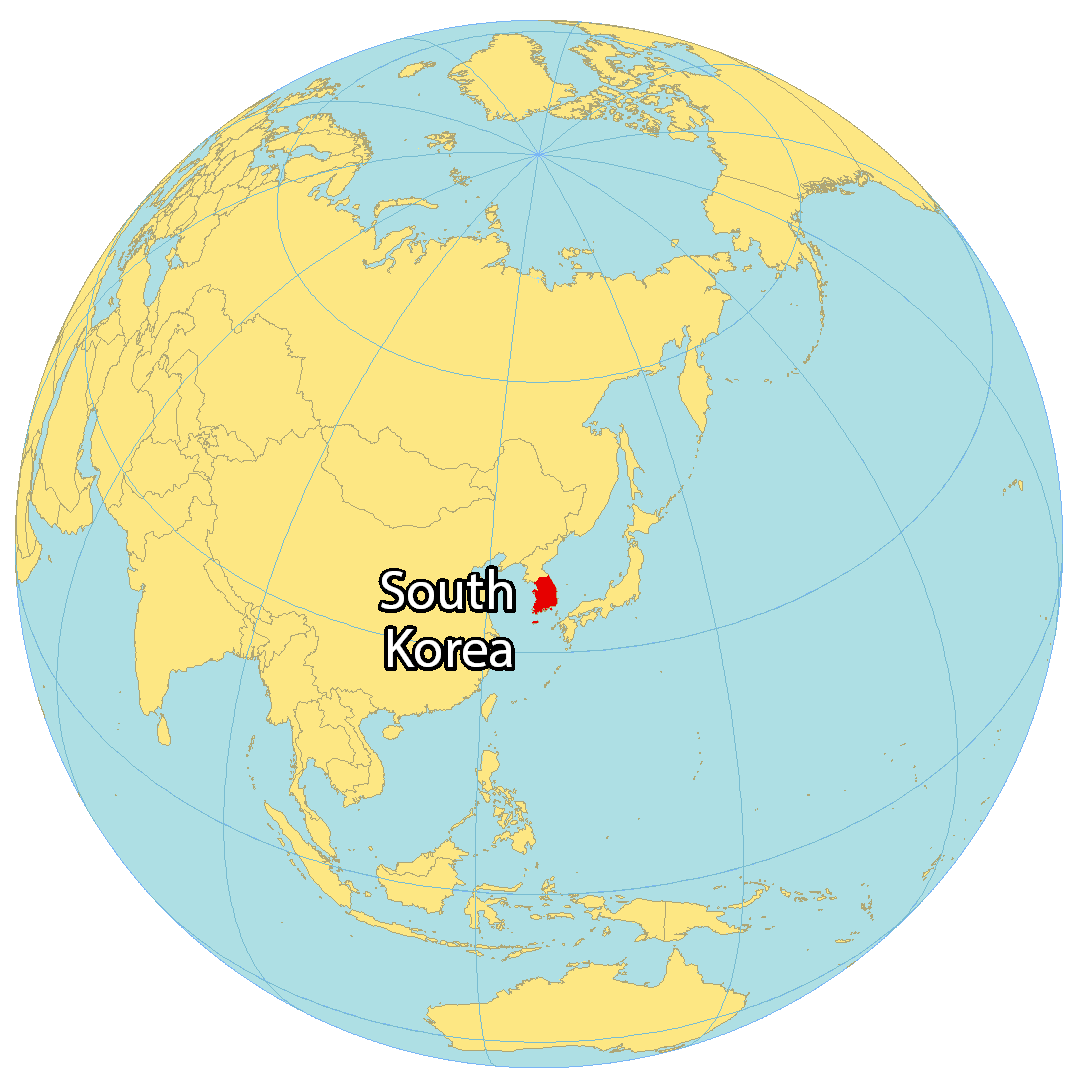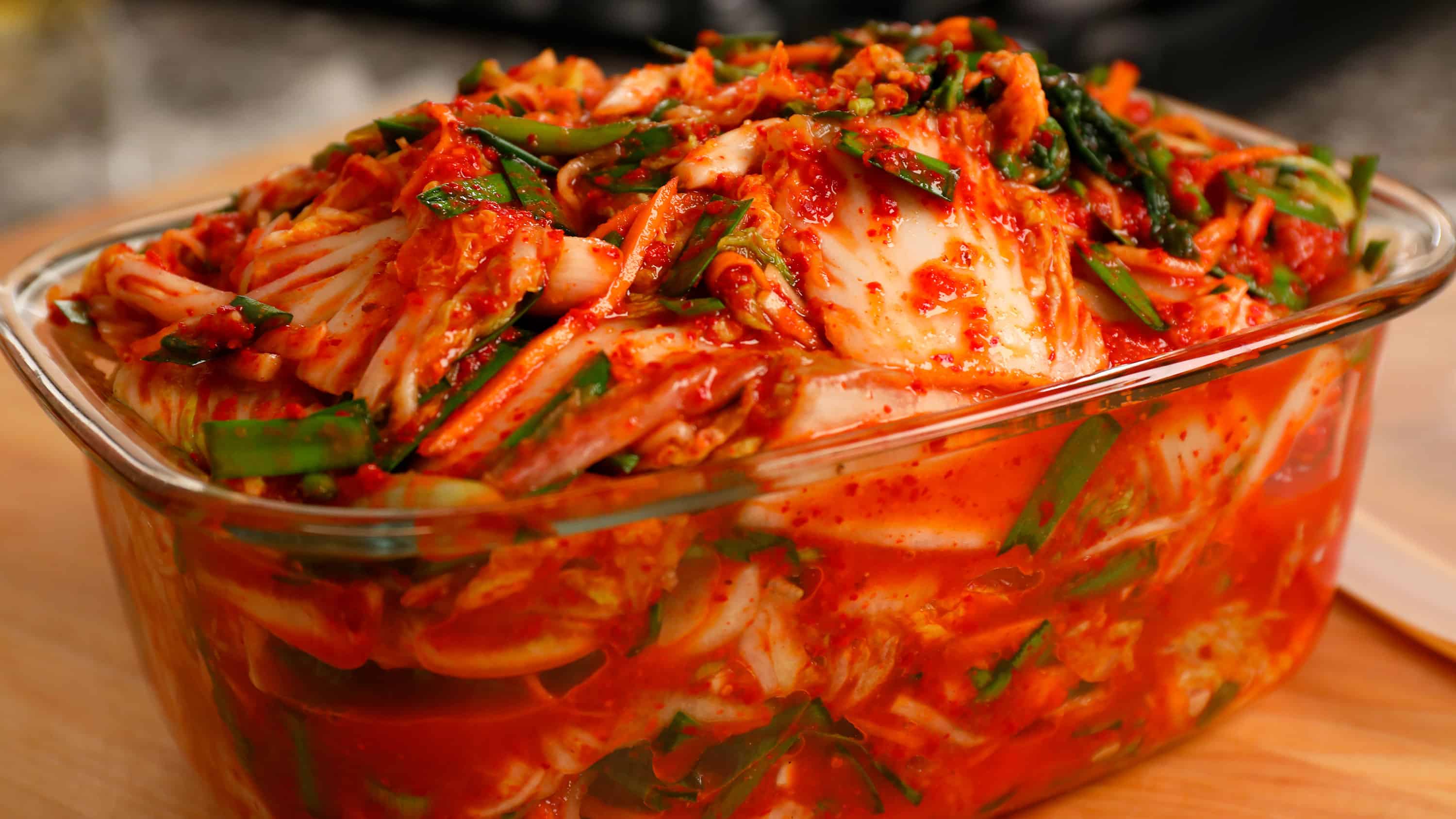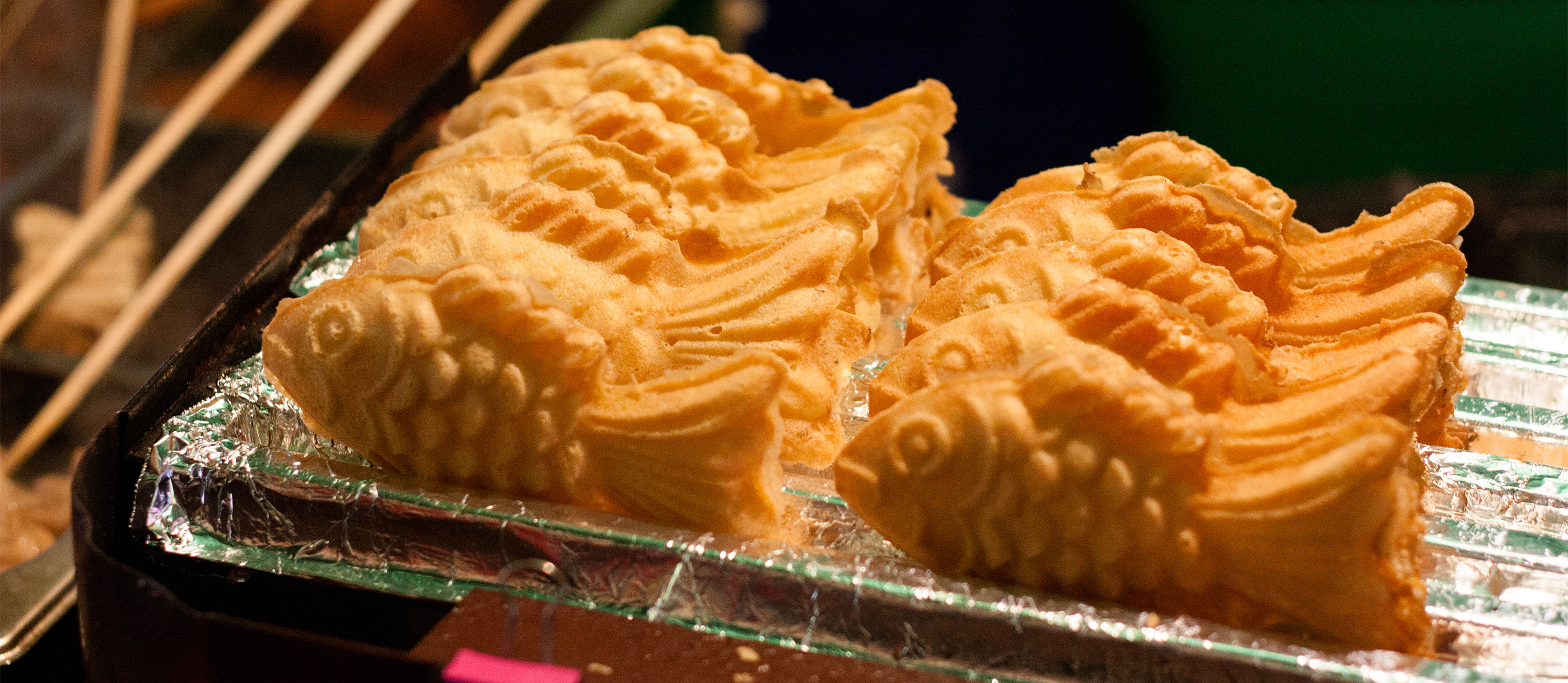

Steps to Follow: Cut the cabbage lengthwise through the stem into quarters. Cut the cores from each piece. Cut each quarter crosswise into 2 inch wide strips. lace the cabbage in a large bowl and sprinkle with the salt. Using your hands, massage the salt into the cabbage until it starts to soften a bit. Add enough water to cover the cabbage. Put a plate on top of the cabbage and weigh it down with something heavy, like a jar or can of beans. Let stand for 1 to 2 hours.Rinse the cabbage under cold water 3 times. Set aside to drain in a colander for 15 to 20 minutes. Meanwhile, make the spice paste. Rinse and dry the bowl you used for salting. Add the garlic, ginger, sugar, and fish sauce, shrimp paste, or water and stir into a smooth paste. Stir in the gochugaru, using 1 tablespoon for mild and up to 5 tablespoons for spicy (I like about 3 1/2 tablespoons); set aside until the cabbage is ready. Gently squeeze any remaining water from the cabbage and add it to the spice paste. Add the radish and scallions. Using your hands, gently work the paste into the vegetables until they are thoroughly coated. The gloves are optional here but highly recommended to protect your hands from stings, stains, and smells! Pack the kimchi into a 1-quart jar. Press down on the kimchi until the brine (the liquid that comes out) rises to cover the vegetables, leaving at least 1 inch of space at the top. Seal the jar. Place a bowl or plate under the jar to help catch any overflow. Let the jar stand at cool room temperature, out of direct sunlight, for 1 to 5 days. You may see bubbles inside the jar and brine may seep out of the lid. Check the kimchi once a day, opening the jar and pressing down on the vegetables with a clean finger or spoon to keep them submerged under the brine. (This also releases gases produced during fermentation.) Taste a little at this point, too! When the kimchi tastes ripe enough for your liking, transfer the jar to the refrigerator. You may eat it right away, but it's best after another week or two.

Steps to Follow: Mix all the dry ingrediants together. In a separate bowl, beat egg and then mix with milk. Heat the fish-shaped Bungeoppang pan on medium heat. Heating the pan properly is important because your batter will stick if it’s not hot enough. About 1 min or so on each side. Lower heat to LOW and open the pan. Brush insides (all 4 sides) with melted butter or oil. It should bubble if it’s hot enough. Pour batter into one side of the mold (the side that’s over heat) – about 2/3 rd of the fish- just to cover the fish eyes and not the tail.Quickly spoon (use two spoons) the red bean paste or red beans into the middle of the batter. Pour batter again to fully cover the red bean paste and fill up the mold. Cover the top lid and immediately flip over the pan. And also raise heat to medium low. Cook about 2 min on each side. Open the pan and check doneness. You may want to cook another 30 seconds or more until it’s nicely browned.